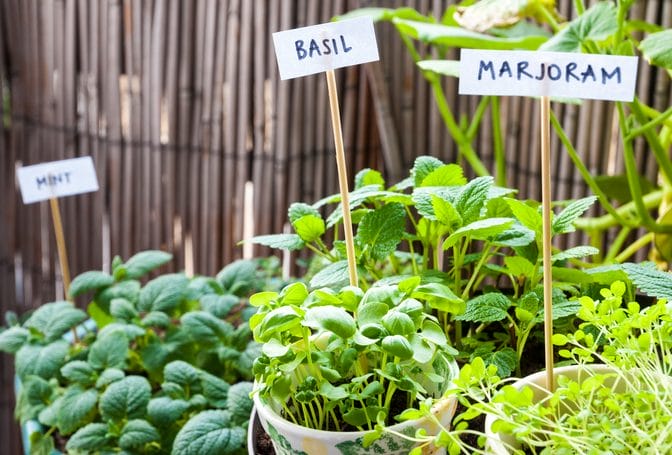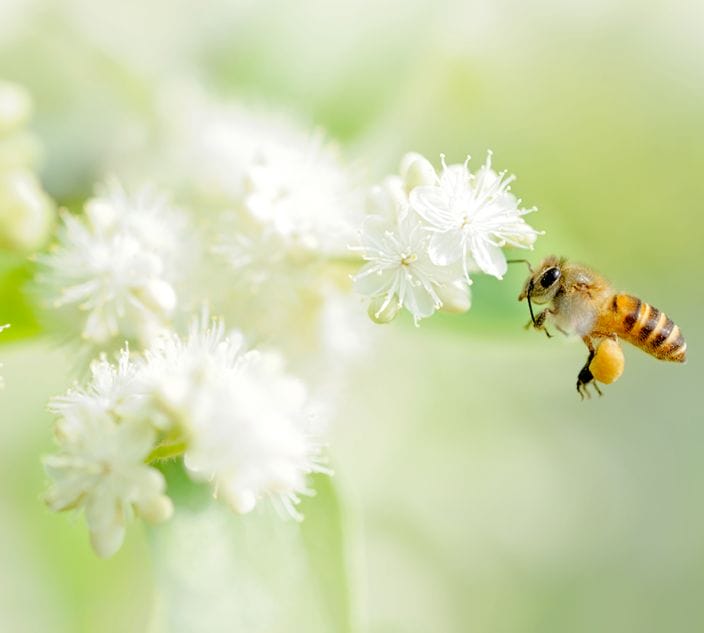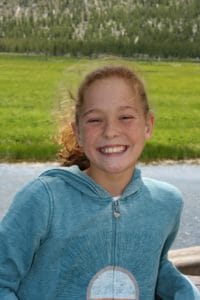
Natalie Giorgi
In July 2013, Natalie Giorgi tragically died of an anaphylactic reaction to peanut. Her family and friends have been devastated – and her death caused an outpouring of sympathy in the food allergy community across North America.
Everyone with a child at risk of anaphylaxis could relate to the loss – and to the senselessness of a maddening disease that can rob us of a bright and caring 13-year-old who could light up a room with her smile.
Natalie had been with her parents Louis and Joanne Giorgi and her three siblings at a family camp outside of Sacramento. On the evening of July 27, 2013, Natalie took a bite of a Rice Krispie treat that she thought was safe. She told her parents that it tasted “funny”, and that she spat it out. It turned out the treat contained peanut, her allergen. At first Natalie felt fine, but she later succumbed to a severe reaction that even epinephrine could not halt.
But out of tragedy, Joanne and Louis Giorgi are working today to bring a ray of hope and light in their daughter’s name.
A year after Natalie’s passing, they spoke to Gwen Smith, Editor of Allergic Living. In the following discussion, they describe their newfound roles as advocates and the launch of the Natalie Giorgi Sunshine Foundation. They also express their wish for Natalie’s story to make a world of difference in public awareness of the seriousness of food allergies.
Q. You mentioned to me that the food allergy community has been very supportive. Has that helped at all?
Joanne Giorgi: Yes, and we’re so appreciative and moved by other parents. We are buoyed by those who thank us and we are guided by knowing that Natalie would want us to do our best to make sure that people understand that this is a disease, that children are suffering with it in higher numbers than has ever been the case, and that we have an obligation to treat it as such, and to give it the focus and importance that it needs.
Louis Giorgi: The emails we get, they say things like ‘my grandparents are carrying auto-injectors’, ‘teachers at school are paying more attention, classmates are paying attention’. Hopefully, that is making things easier and safer for kids with food allergies.
Q. I think the whole food allergy community is wondering: how is your family doing now?
JG: You know, I have four beautiful children, I just have three here with me and one who is not. Those three other children still need our love and our time and our attention. They are a blessing, and they are what gets us out of bed every day.
But our family is not the same. And I think that anyone who has lost a child would understand what that means. So we have tried to figure out a way to honor Natalie, and that brings us some peace on a day-to-day basis.
LG: I think at first, you’re just dealing with the situation, but then you come to realize that people are paying attention because of Natalie’s story. It got families to pay attention to their children’s [food] allergies, parents meeting with their allergist. Grandparents are going in to the allergist to hear it for themselves. It seems like the safety net has been thrown wider because of Natalie.
We’ve had feedback from our friends that their allergists are saying Natalie’s story has led people to start coming into their offices and getting new EpiPen prescriptions and asking for a [management] plan, and asking for literature. We’ve heard about patients being much more compliant, they realize this is very real. And that’s where Natalie’s story garners attention – it is very real, it is a story that should never be repeated.

Natalie with her mom, Joanne Giorgi.
Q. Could you explain how the Natalie Giorgi Sunshine Foundation has come about?
JG: When the discussion of whether to create a foundation in her name came up, both Louis and I thought ‘yes’ because Natalie was an amazing kid – she truly cared about other people. Natalie was born at 29 weeks and was smaller than some of the others, and she was always out there, helping the other kid. She really got that we do, as human beings, have a responsibility to look out for one another.
As well, Natalie understood her allergies, she was so good about managing them, she knew what it was to be a kid with food allergies. Creating a foundation to share her story in the hopes of raising awareness and educating people and hopefully someday finding a cure, those are exactly the things that Natalie would have been so behind.
LG: Natalie was always very good about her allergies, but she also thought we should be able to do better than having to sit at a table at lunch on your own, or everyone having a dessert that she couldn’t have. She’d asked over the years: ‘Why can’t it be easier?’
With all these great people we’re working with, we can help be part of the solution and making it easier and safer. That’s where this foundation came from.
Q. You two have also joined the advocacy for California’s bill SB 1266, sponsored by Senator Bob Huff. It would ‘require’ – rather than just allow – public schools to stock epinephrine for emergency use. Did you seek out the involvement?
LG: We’d reached out to thank Senator Huff for putting forward this bill. And when we met with him, he asked us to get involved and that’s how that happened. [He mentions allergist Dr. Kari Nadeau and others also giving important support to the bill.]
It’s now through all the committees except Appropriations. Hopefully, that final push will happen and California can follow some of the other states and make epinephrine more accessible in schools – and perhaps then, that will move forward to restaurants and public places in general. One step at a time in the process. [Editor’s 2015 note: The bill is now law.]
Q. Joanne, you lobbied for this bill in front of a Senate committee. That can’t have been easy.
JG: I felt very much supported by Senator Huff’s staff, but I’d never done anything like that. A year ago, we led a very different life. Now at this point, I’ve testified there [before Senators and media], we did the segment on the Today Show and now we’re talking to you.
These are not things I would have gone looking for. But they gave me the opportunity to tell Natalie’s story. And I was able, on Natalie’s behalf, to ask them to help protect other children in our public school systems here in California.
It felt really good, very empowering to know that I could hopefully be doing something that could have a positive impact on somebody’s life some day. While I hope that nobody has to use an EpiPen, it feels good to know that maybe now, in the event of an emergency, a school is going to have it there.
Q. When it comes to anaphylaxis as a public health issue, where do you two think that discussion should head?
LG: There’s the perfect world and the world we live in, but certainly having availability of epinephrine in restaurants and public places, akin to the AEDs and fire extinguishers, that seems like a smart way for us to proceed. Until there’s a cure, we need to have safety nets.
As you know, there are a number of people out there with undiagnosed food allergies, or bee sting allergy, so it’s not just for children and adults with known food allergies. We need to have access to that medicine.
JG: I think the focus of getting epinephrine into the schools is a great start, and hopefully we’ll just progress, so we can keep all people safe in the event of an emergency.
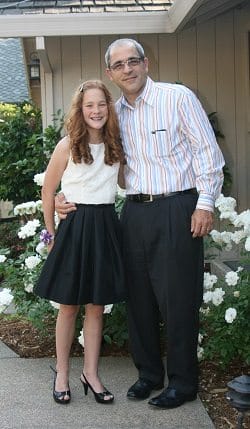
Natalie with her father, Louis Giorgi.
Q. Besides your Sacramento allergist, your children are also now seeing Dr. Kari Nadeau at Stanford University’s medical school. She is one of the top food allergy researchers. How did she come into your lives?
JG: It was through John Lehr at FARE. [Lehr is FARE’s former CEO.] John came out to the 2013 FARE walk in Sacramento, and we had some time to speak with him. He was pretty sure Dr. Kari would be able to speak with us. We are now working with her team on our children’s medical care. We are blessed to have her in our children’s lives; she is amazing.
There are good people like Dr. Kari who are working towards a cure. They really are able to give families the hope and the promise that something will be done.
Q. As you know, following Natalie’s death we ran an article with allergist Dr. Robert Wood that drew a big response – because it got into issues like the circumstances of when to give epinephrine. There have been differing opinions, even among allergists. Do you get the sense that, among physicians, there has been some change in thinking of what is advised if there’s a chance the person may have consumed a food allergen?
LG: It’s hard to generalize and so many things come into play, like the personal history of anaphylaxis. In the end, I’m a doctor [he’s a urologist] and a dad, but I’m not an allergist, and that’s where the Kari Nadeaus and Dr. Woods of the world and NIH come into play as far as protocols.
But that said, Natalie certainly raises that question and, of course, people aren’t going to be out there as clinicians, they’re going to be out there as parents who’ve worked with their child’s allergist and know their test results and their overall risk.
We get a lot of these questions, too, on our website and I always say the safest answer is for you to talk to your doctor about your child and to be prepared with your [emergency care] plan.
JG: We’re trying very much to make sure that people are having conversations with their physician and coming up with their child’s action plan. It’s a really important conversation.
Q. The new foundation is called the Natalie Giorgi Sunshine Foundation. Why ‘sunshine’?
JG: When Natalie was a couple of days old, we nicknamed her the Sunshine Girl. She always had a smile on her face. When she was in the NICU [neonatal ICU] – we spent just shy of three months there – I made up a little song, and that’s where the Sunshine Girl came from and it stuck with her. I will spare you – and not sing her little song!
When we looked at a name for the foundation, we saw a lot of hope with using the word ‘sunshine’. She was our Sunshine Girl and maybe she can shine her light and open this up as a dialogue on food allergies – which your readers know are often very misunderstood.
Q. The foundation is working for awareness and people can donate at the Nateam.org website, correct?
JG: People can donate through the website or by mail. We are still doing fundraising to get the foundation going to support allergy awareness and education for years to come.
[The foundation has a number of initiatives in the works, from buying food allergy books and other materials to put in schools to creating a video around Natalie’s story to raise the profile of anaphylaxis.]
 Q. You’ve said you received many letters and notes from the food allergy community. Did anything in particular have a big impact?
Q. You’ve said you received many letters and notes from the food allergy community. Did anything in particular have a big impact?
JG: In terms of one that stood out, in the first week after Natalie died, I got a letter from a mom in Monterey. She sent me a photograph of this darling 6-year-old and thanked us for letting Natalie’s story be told. I believe her daughter was anaphylactic to dairy and her point was that this would help those around her who might not realize that a reaction can be fatal.
Her words were along the lines of: ‘Thank you, because your daughter’s story has helped other people to understand better. I believe your daughter’s story may save my daughter’s life.’
I mean, nothing brings back our child, but if we can help there be more understanding and education for someone else’s child, that is terribly powerful – because we would never want any family to suffer in the same way. That was the first letter where I said: ‘Wow, this woman is crediting Natalie’s story with potentially saving her daughter’s life.’ It was a powerful, uplifting thing to be told by another mother.
LG: We’ve had other letters, going on about how doctors treat patients. There’s a family whose child went to the emergency room and the EMTs wouldn’t give the epinephrine. And the mom said, ‘I heard this story [about Natalie] and we need to do something.’
The ER doctor said he thought it was OK and ‘we can just watch her’ – so the mom got her allergist on the phone, who yelled at the ER doctor to give the medicine. As the girl was getting the epi, she went into full-blown anaphylaxis and it took several doses. But she survived.
Q. There has been such an outpouring of compassion for you. What would you like readers to know about how you feel about the food allergy community?
LG: We have had a lot of nice people thanking us for making it easier and safer for their kids. And that’s what Natalie would want – to make it easier and safer.
JG: We’re extraordinarily grateful to the food allergy community for their support. It does give us a purpose to continue sharing Natalie’s story. We know that your readership, this is something they all live with every day, that we still live with [with their other children], and we want them to know that we are committed to doing our part to spread awareness and education and to share Natalie’s light with the world.
We are thankful, we are grateful, and their support is a comfort to us.
You can read more about the Natalie Giorgi Sunshine Foundation at Nateam.org. You’ll find directions for donating to the foundation by mail or online, and you can drop a comment of support for the Giorgi family.


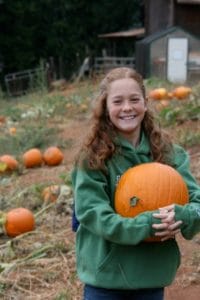 Q. You’ve said you received many letters and notes from the food allergy community. Did anything in particular have a big impact?
Q. You’ve said you received many letters and notes from the food allergy community. Did anything in particular have a big impact?
